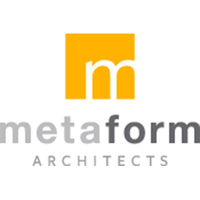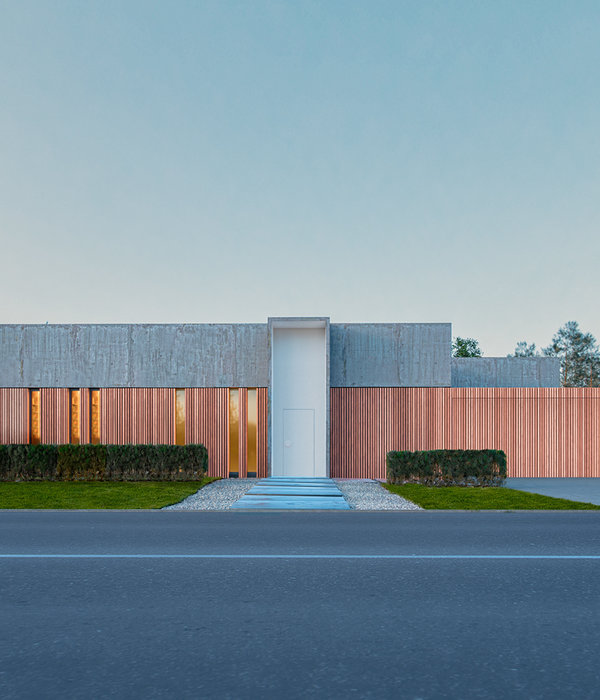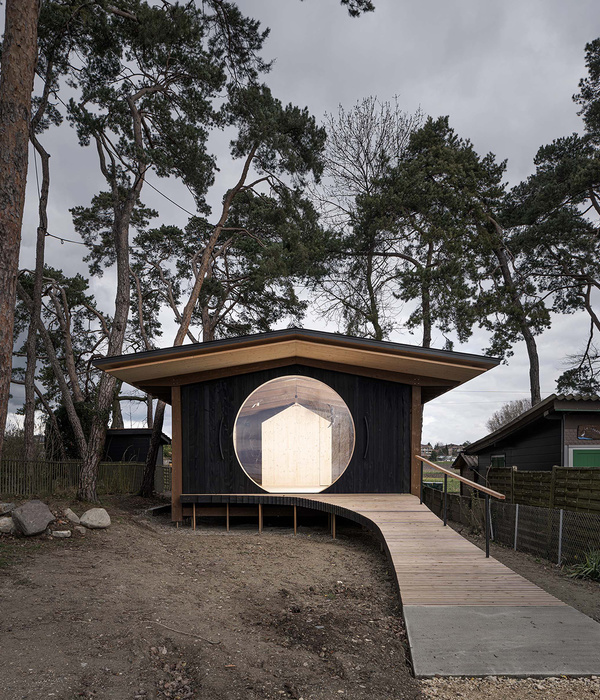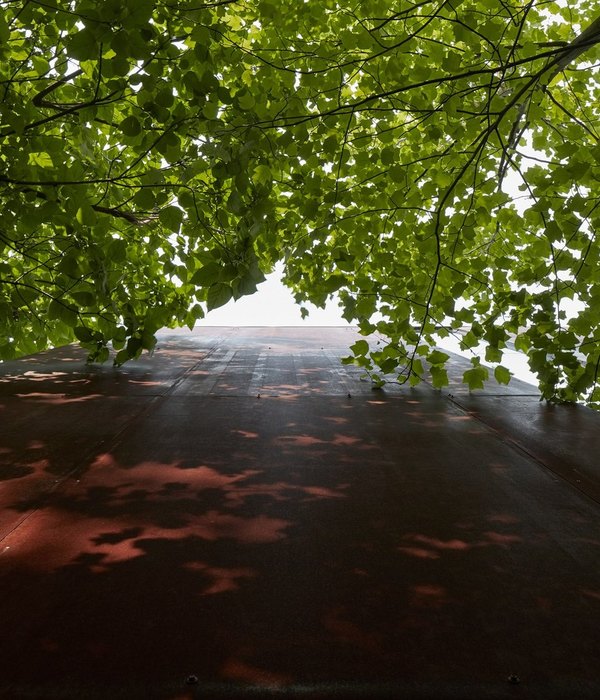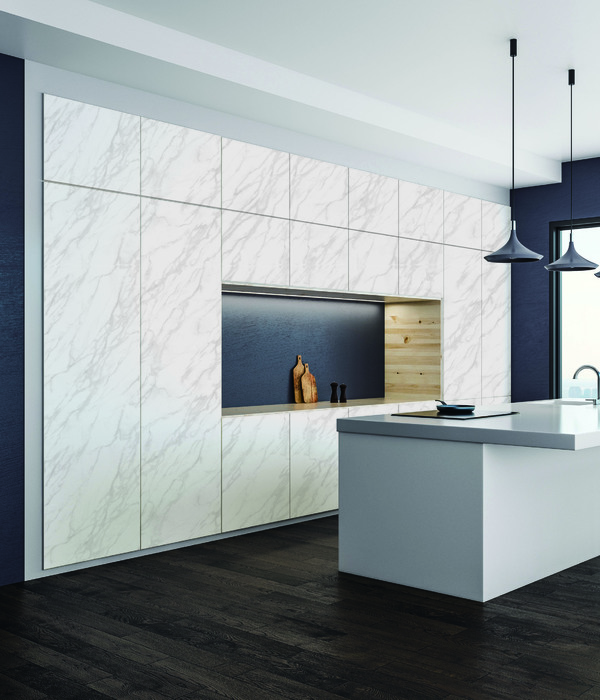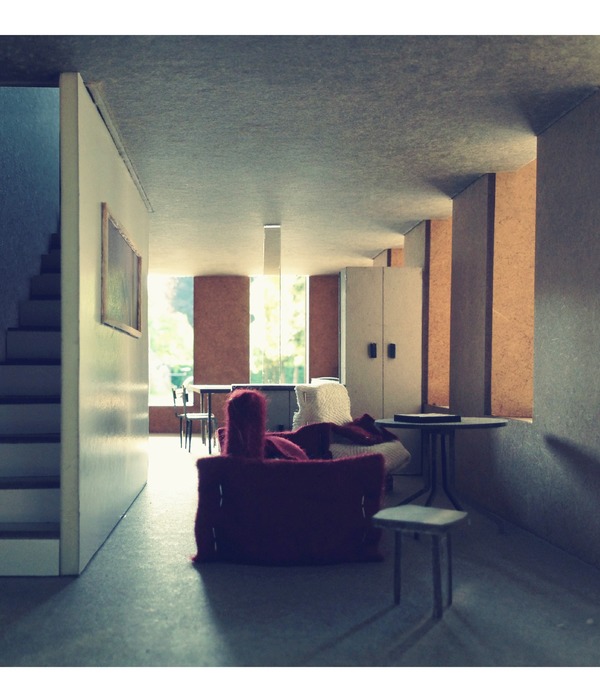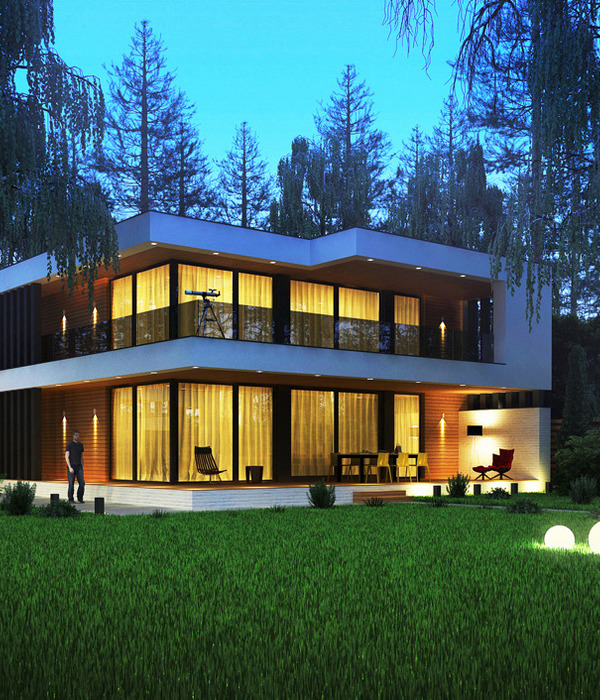适应复杂地形的联合住宅
这个联合住宅位于弯曲街道的一侧,建在一个高差10米的陡峭地形上。场地内生长着有三百年历史的树木,被列入国家古迹。这些都是建筑物外形设计的初始条件。此外,该建筑物响应具体的城市居住环境,一方面是小型单元住房,另一方面是大型公寓楼:通过将主体建筑分为六个较小的竖向上可拆分的单元,微妙的处理了高差的过度。建筑物完美地适应了周围环境;它保留居住所需的密度,同时创造了具有归属感,身份认同感,和人性化的空间。
The plot is situated along a particularly curved street, a very steep topography with 10 meters of difference in height and a preservation of three-century-old trees, classified as national monuments – all of these conditioned the initial shape of the building. Furthermore, the building responds to the specific urban context (small-scaled housing units on one side and large-scale apartment block on the other): it creates a subtle transition by splitting the main volume into six smaller, vertically shifted blocks. In this way, the building is adjusting to its surroundings; it preserves the required density, while nurturing the feeling of belonging, identity, human scale.
▼ 联合住宅位于弯曲街道一侧,the plot is situated along a particularly curved street

一旦讨论到住房问题,今天大多数城市地区居民面临的主要矛盾就是:不断发展的城市,和区域内增长的住房需求——出于需要,他们被迫选择公寓式的住房环境,而不能随心所欲的享受独栋的住宅空间。他们的主要关注的有以下几点:
When it comes to housing, one of the main problems people are facing in most urban areas today – often places of constant growth and raising housing demands – is a need to choose an apartment typology over single-family houses not because of their desire, but out of necessity. Their main concerns can be summed up as following:
通常,在人们心中,住宅建筑意味着“在盒子里度过的一生”,他们不在乎生活质量,归属感和身份认同感;不在乎缺席的自然光和景观
和邻居过分的靠近,隐私失去了保护
不同程度上物理空间的不足,限制了生活的舒适性
1. Typically, in people’s minds residential buildings often imply ‘a life in a box’, without living quality, feeling of belonging and identity; a lack of natural light and a view
2. Proximity to the neighbors resulting in the lack of privacy, both visual and acoustic
3. The insufficient physical space in various forms for a life of comfort
市政建筑中规定:不论何种特殊的地形,所有的建筑都必须是一个单独的体块,并且要包含一个2层的地下室。然而这个设计周围的环境,特定的地形条件和形式提供了不同的可能性,同时也应该可以解决上述提到的问题:
According to the municipal building regulations and consent, regardless of the peculiar topography, a priori the regulations would allow for a simple single-block building, with a 2-story flat basement. However, the surrounding context, specific terrain conditions and form of the plot offered a possibility for different experiment, while at the same time reflecting and responding to the named issues:
▼ 建筑位于一个复杂高差地形的区域,the plot located on the complex site


事务所对住户自然光的需求进行了细致的研究,使建筑中面向城市全景,创造了与天空的接触,同时保护了居民的隐私。对隐私问题的另一个处理包括加强垂直方向的沟通,消除一直以来水平、黑暗的走廊。三个垂直的连接点将地下停车场直接连接到公寓内部。
▼ 面向城市景观的窗体,the openings create a panoramic view of the city
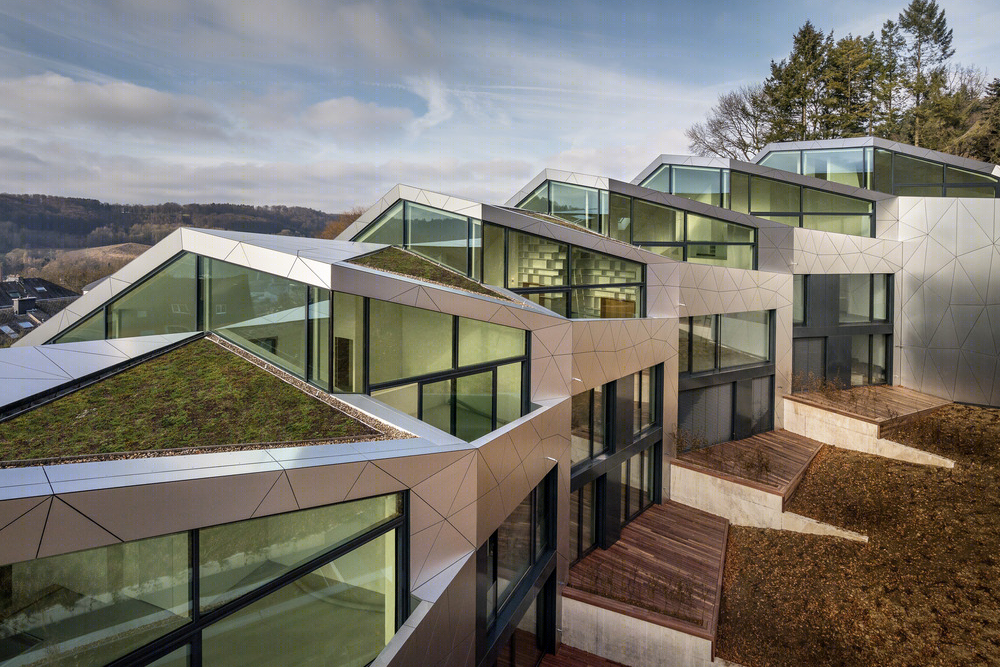

另一方面,建筑师除了在必要时保护居民的隐私之外,还希望让居民在共同的室内空间中交流沟通。住宅中的厨房,休闲室,游戏机等设施可以提高住户的互动和社区生活意识,同时可以良好的保护他人的隐私,和平的实现公共空间的价值。这些场地除了创造共同的空间,还可以举行普通和私人聚会,地下的楼层为每个公寓提供了宽敞的储存空间。
On the other side, the architects had idea to, apart from offering a privacy when needed, give residents a possibility to meet and get to know each other in a common shared indoor space. The facilities such as common kitchen, leisure room, games – are all designed and intended to bring value by improving social interaction and a sense of community living, on individual voluntary bases, while preserving the privacy and peace of others. Apart from creating the meeting common space that can accommodate common as well as private gatherings, the underground floors offer of a spacious storage for every apartment.
▼ 建筑内创造摄于生活意识的公共空间,the public space within the residence brings a sense of community living


该建筑物是由钢筋混凝土结构构成,三角形铝板形成的外墙。墙体的保温由矿物纤维组成,采光用的三层玻璃可以兼顾保温效果。大型玻璃元素特别涂有防紫外线涂层,以防止建筑物过热。
The building is made of a massive structure of reinforced concrete, faced with a ventilated facade made of triangular aluminium panels. The thermal insulation of the walls consists of mineral fibre. The openings are filled with three-layered glass in an aluminium frame. The large glass elements are specially coated with anti-UV film to prevent the building from overheating.
▼ 铝板的外墙,保温的三层玻璃,ventilated facade made of triangular aluminium panels, the openings are filled with three-layered glass


建筑的节能问题也是建筑师重点考虑的,采光主要在南面和东面,而北面封闭。根据卢森堡法律,该建筑被列为低能耗建筑(B-B级)。还包括集中的通风系统以及用于生产热水的太阳能电池板,来优化项目的能源使用效率。外立面的选择上,使用了需要最小维护的材料。
An important aspect of the energy concept of the building is the orientation; the large openings appear mainly on the south and eastern facades, whereas the north facade is mostly closed. According to Luxembourgish laws the building is classified as a low-energy building (Class B-B). A centralized ventilation system as well as solar panels for hot water production are also included in order to optimize the energy efficiency of the project.The used facade materials have been chosen in order to allow for the minimal maintenance.
▼ 区位,Masterplan

▼ 底层平面,Ground Floor Plan
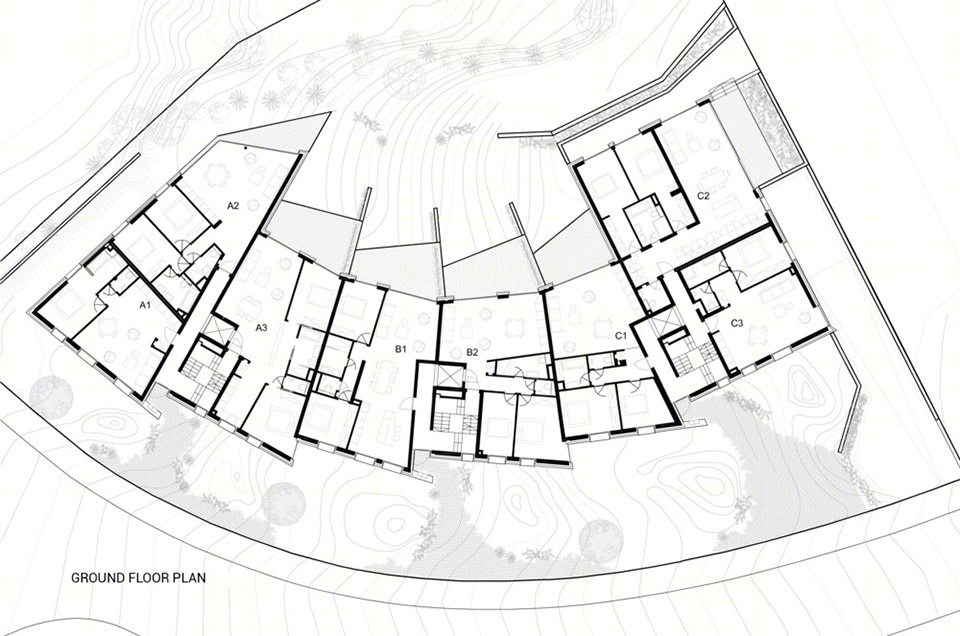
▼ 一层平面,First Floor Plan
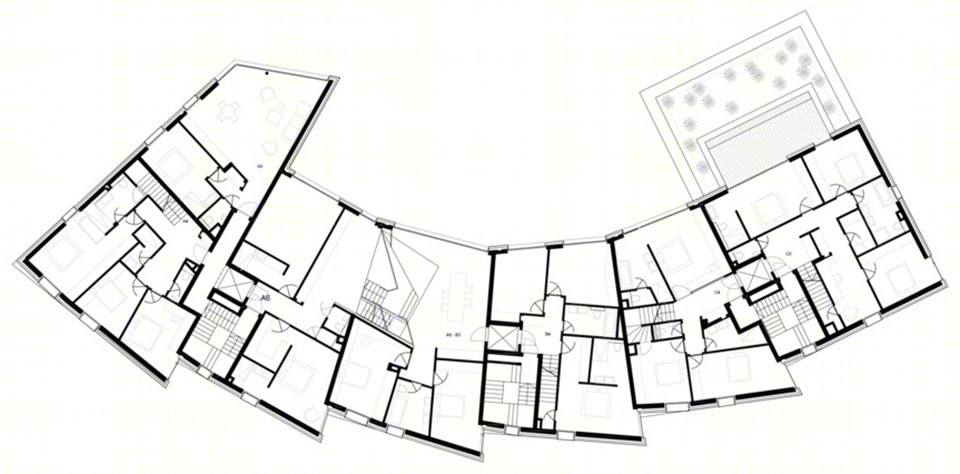
▼ 二层平面,Second Floor Plan

▼ 立面图,Elevation
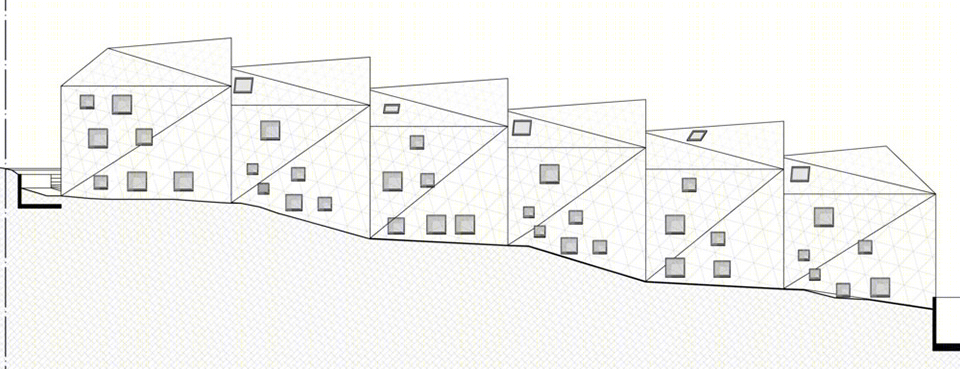
▼ 剖面图,Section

Location: Dommeldange, Luxembourg
Client: ASARS Construction
Architects: Metaform architects
Photographer: Steve Troes Fotodesign
Gross floor area: 2250 m²
Gross volume: 8000 m³
Year of completion: 2016

